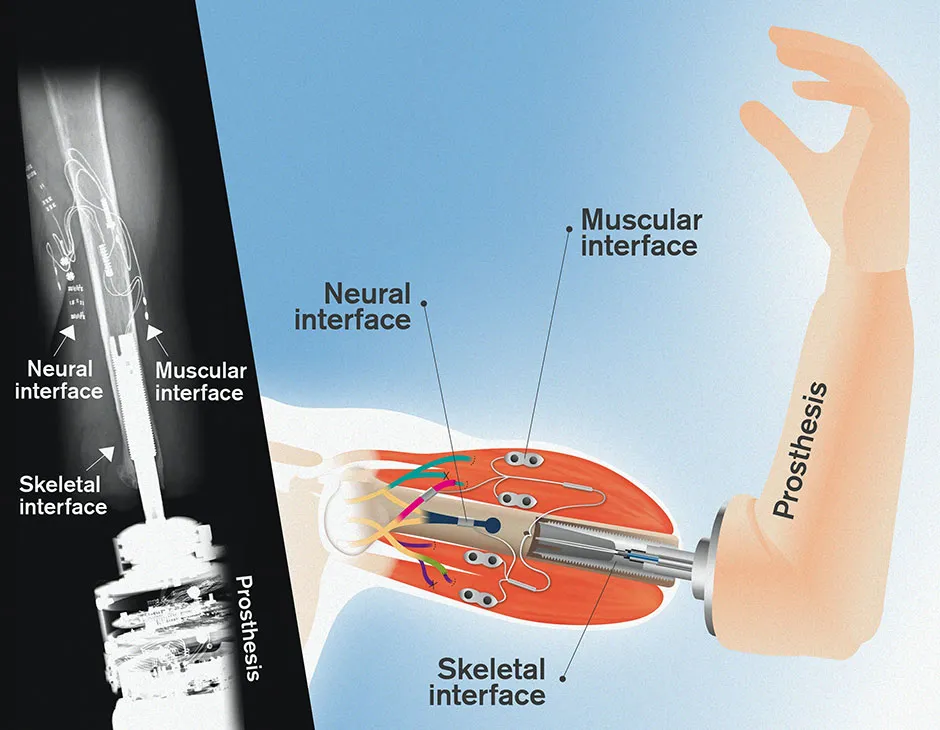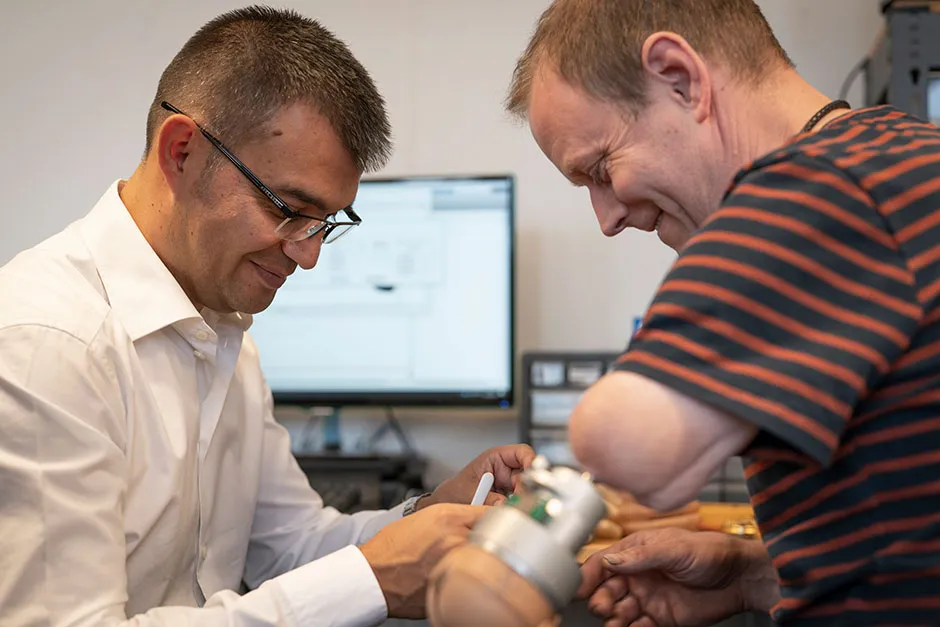An implant system that allows users to control their bionic arm with their thoughts without the need for any supporting equipment could be available in Europe in the next two years, scientists have said.
The researchers in Sweden who designed the system are hoping to get a CE mark for their product so it complies with the EU’s safety and health protection requirements.
The implant system, which can connect to any commercially available arm prosthesis, is currently being used by three people in Sweden who have had an amputation above the elbow.
Read more about technology for disability:
- 'Nerve interface' technology allows amputees to use thought to move bionic limb
- Exoskeleton controlled by brain signals allows disabled man to walk
Dr Max Ortiz Catalan, an associate professor at Chalmers University of Technology in Sweden, said that their prosthesis could be a clinically viable replacement for a lost arm.
He told the PA news agency: “People in Sweden can have this technology now. We were working to ramp up the production before the pandemic began.
“We are aiming to have it CE marked soon, within two years, and once it is CE marked, it can be available in Europe as a product.”

Two of the three patients involved in their clinical trial have been using their bionic arms for around three years, while the third participant has been using his artificial limb for seven years.
A new functionality – the sensation of touch – has recently been added to all the three prosthetic arms.
Read more about prostheses:
- Print your own body parts
- Revolutionary new valve could save children from repeated open-heart surgery
Dr Ortiz Catalan said that the implant system, which anchors the prosthesis to the skeleton in the stump of the amputated limb, is stable and can be used for long periods of time without any intervention from the scientists.
He told PA: “The real breakthrough here is that this neuromusculoskeletal interface, as we call it, allows the artificial limb to be connected to the body. And when you have that intimate connection between the technology and biology, you can have a better control and establish sensory feedback.”

According to Dr Ortiz Catalan, the system delivers sensations that feel like they are arising from the missing hand.
The implant system is self-contained, so patients do not need to carry additional equipment such as large computer backpacks or batteries.
Electrodes fixed in the remaining muscle in the stump deliver sensory information, which allows users to have greater sensation and control over the hand. Patients are able to feel when they are touching an object, its characteristics, and how hard they are pressing it, the researchers said.

Dr Ortiz Catalan said while the prosthetic is not as good as real hand it does allow people to be able to go about their daily lives.
He added: “We are not under the illusion that this technology is perfect – there is still long way to go. In the meantime, we are looking to increase functionality by adding more sensations and more control.”
The research is published in New England Journal of Medicine.
Reader Q&A: Is it really possible to control a robot with your mind?
Asked by: Ryan Cooke, St Albans
Yes it is. The USA’s Defense Advanced Research Projects Agency (DARPA) has a brain-controlled prosthetic arm for upper limb amputees. As the user thinks about various movements, the arm picks up the responding brain signals that appear in the remaining nerves at the site of the amputation. With incredible dexterity, the user can remove a letter from an envelope and even move eggs from one box to another.
But away from government-funded research projects, hobbyist and engineer William (Chip) Audette in Vermont controls a small toy robot using his brainwaves. He’s using open hardware called OpenBCI where electrodes on his head pick up brainwaves. The level of control is crude but is proof that advances in EEG technology, machine learning and robotics really are ushering in an age where we can control devices through the power of thought.
Read more:
